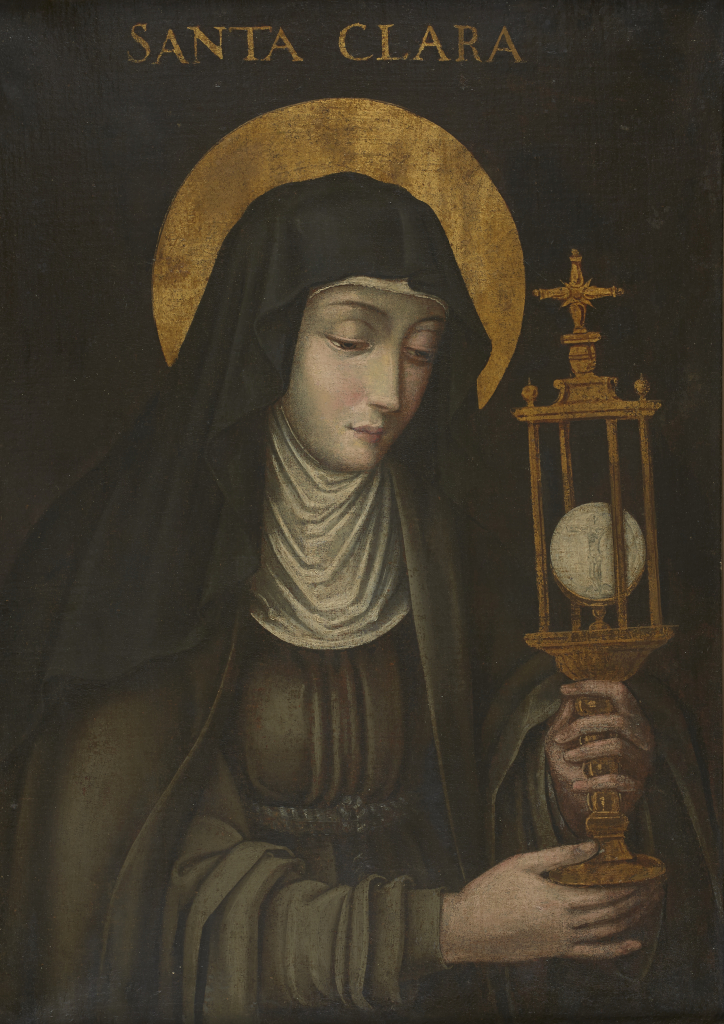Saint Clare with a Monstrance

attributed to Andrés Sánchez Gallque, Saint Clare with a Monstrance, ca. 1600, oil on canvas, Bequest of Elvin A. Duerst, public domain, 2010.25.16
This work is on view.
- Title
Saint Clare with a Monstrance
- Artist
attributed to Andrés Sánchez Gallque (Ecuadorian, active ca. 1599)
- Date
ca. 1600
- Period
Spanish Colonial
- Medium
oil on canvas
- Dimensions (H x W x D)
image: 31 in x 22 in; frame: 37 7/16 in x 28 7/16 in x 2 5/16 in
- Inscriptions & Markings
title: SANTA CLARA, brushed, top
- Collection Area
European Art
- Category
Spanish Colonial Art
Paintings
- Object Type
painting
- Culture
Ecuadorian
- Credit Line
Bequest of Elvin A. Duerst
- Accession Number
2010.25.16
- Copyright
public domain
- Terms
- Location
One of the closest followers of Saint Francis, Saint Clare of Assisi founded the Franciscan order of sisters popularly known as the Poor Clares. Her attribute is a monstrance, a liturgical vessel used for the veneration of the consecrated host, the sacramental bread converted into the body of Christ in the mass. Clare famously repelled the marauding troops of Emperor Frederick II by appearing at her monastery's gates with a monstrance in 1224. The Franciscans were the first order to settle in Quito and remained very influential there. Sánchez Gallque was an indigenous artist who probably trained with the Dominican painter, Pedro Bedón (1556– 1621). Bedón, a Spaniard born in Quito, had studied with Bernardo Bitti, a Mannerist painter sent from Italy by the Jesuits. The use of a gold halo would have seemed oldfashioned in Europe at this time, but was appreciated in the New World.
- Exhibitions
2015 Art from the Andes: Spanish Colonial Paintings from the Elvin A. Duerst Bequest Portland Art Museum









